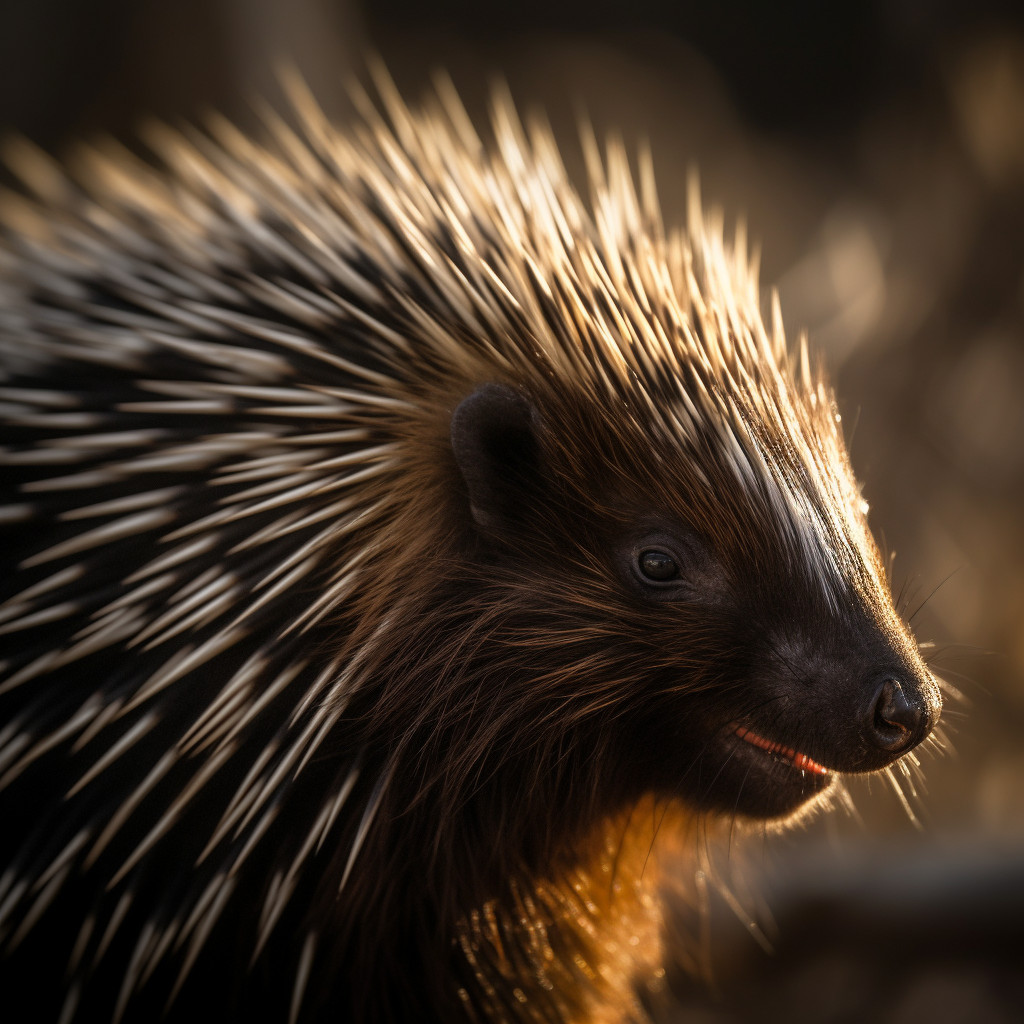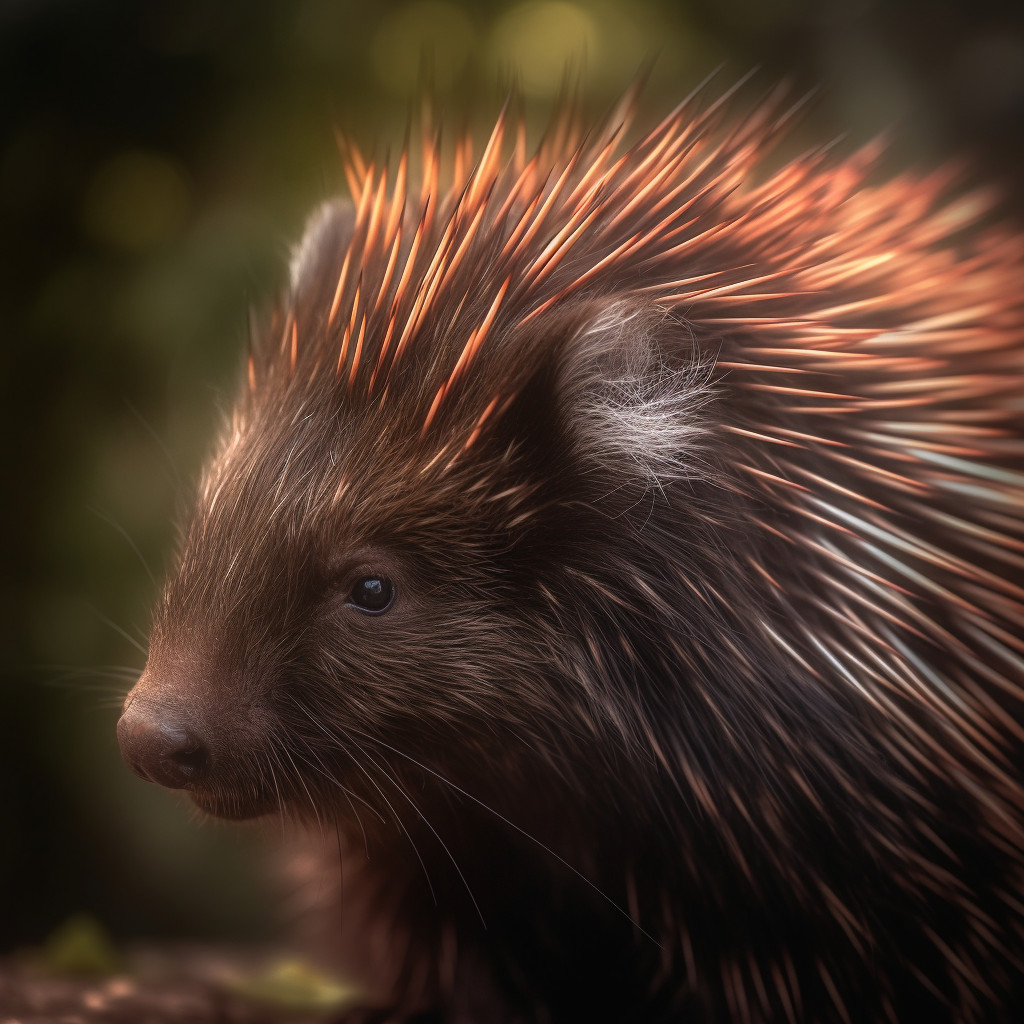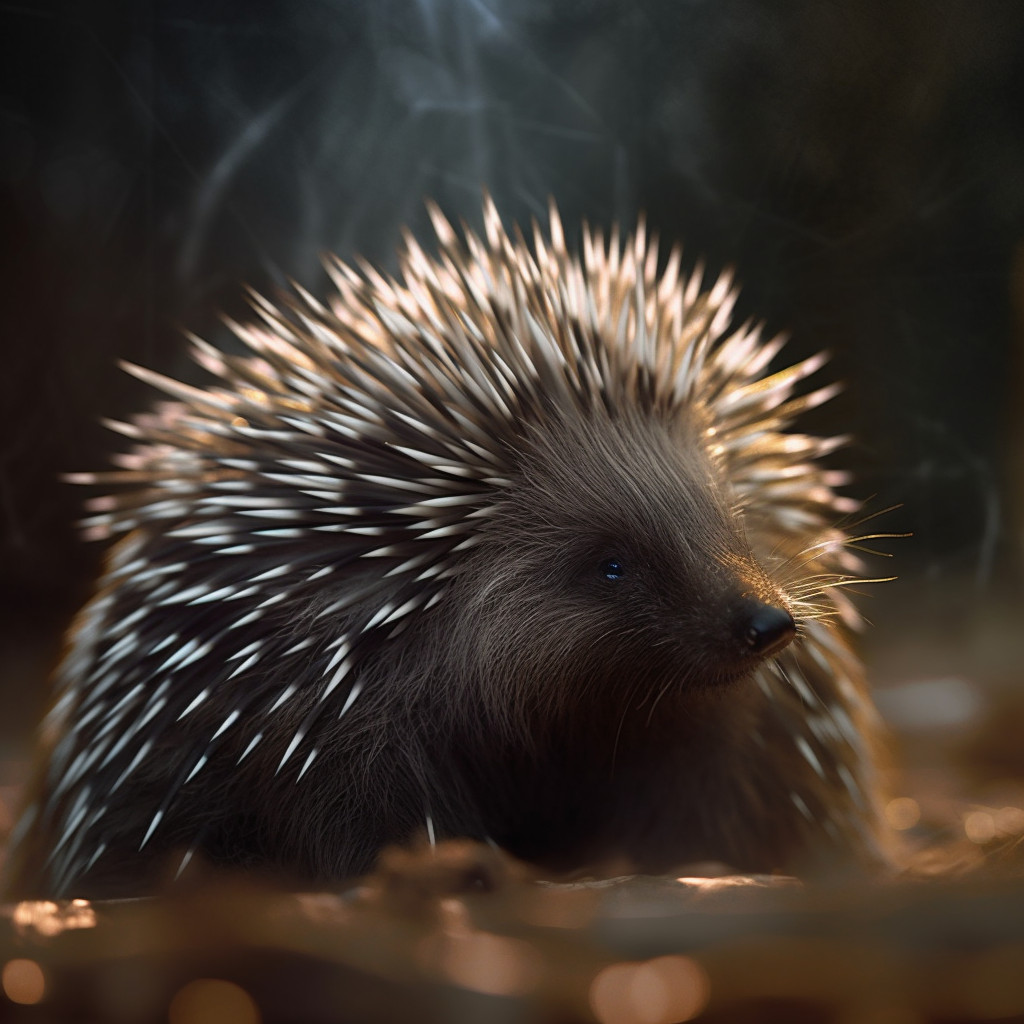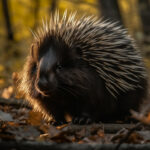Porcupines are fascinating creatures that are known for their unique defense mechanism of quills. These spiky quills cover their bodies and serve as a deterrent to predators. However, when it comes to their tails, there is some confusion. So, do porcupines have tails? The answer is yes, porcupines do have tails, but they are not like the long, bushy tails that we often associate with other animals. Instead, porcupine tails are relatively short and stubby, measuring around 8 to 10 inches in length. While not as prominent as their quills, the tails of porcupines play an important role in their daily lives. In this article, we will explore the purpose and characteristics of porcupine tails, shedding light on these intriguing creatures. So, let’s dive in and discover more about porcupines and their unique tails.
Key Takeaways
- Porcupines do have tails.
- Their tails are short and covered in quills.
- The tail helps them with balance and communication.
- Porcupines use their tails to warn predators by shaking them.
- The quills on their tails are sharp and can be used as a defense mechanism.
Understanding Porcupines: A General Overview

A. What are Porcupines?
Porcupines are fascinating creatures that belong to the rodent family. They are known for their unique and iconic quills that cover their bodies. These quills are actually modified hairs that serve as a defense mechanism against predators. When threatened, a porcupine will raise its quills, making it difficult for predators to attack without getting a painful reminder of their presence.
There are several species of porcupines found around the world, with the North American porcupine and the African porcupine being the most well-known. While they may vary in size and appearance, all porcupines share similar characteristics and adaptations that make them intriguing creatures to study.
B. The Unique Characteristics of Porcupines
- Porcupine Quills:
- Porcupine quills are one of the most distinctive features of these animals. They are sharp, barbed, and can grow up to several inches long. These quills are primarily found on the back and tail of the porcupine, providing them with effective protection against predators.
-
Contrary to popular belief, porcupines cannot shoot their quills. Instead, when threatened, they will often back into their attackers, causing the quills to detach and become embedded in the predator’s skin. This defense mechanism can be painful and even life-threatening for predators.
-
Porcupine Tail:
- Yes, porcupines do have tails! However, their tails are not as long or prominent as those of other mammals. The length of a porcupine’s tail varies depending on the species, but it generally ranges from a few inches to about a foot long.
-
The primary function of the porcupine’s tail is to provide balance and stability while climbing trees or navigating their environment. It also helps them communicate with other porcupines through subtle movements and gestures.
-
Porcupine Behavior:
- Porcupines are primarily nocturnal animals, meaning they are most active during the night. They are solitary creatures and prefer to live alone, only coming together during the breeding season.
-
These herbivorous mammals have a varied diet, feeding on bark, leaves, twigs, and even fruits. Their strong teeth and jaws allow them to gnaw through tough plant material with ease.
-
Porcupine Defense Mechanisms:
- Apart from their quills, porcupines have other defense mechanisms to protect themselves. When threatened, they may stomp their feet, growl, or even charge at their predators. These behaviors are meant to intimidate and deter potential threats.
- Additionally, porcupines have a strong odor that acts as a deterrent. This scent is produced by special glands located on their feet, and it warns predators to stay away.
Porcupines are remarkable creatures that have adapted to survive in various habitats around the world. Their unique characteristics, including their quills and tails, play a crucial role in their survival and defense against predators. Studying these fascinating animals provides valuable insights into the wonders of wildlife biology and the diverse adaptations found in nature.
The Enigma of Porcupine Tails

Porcupines are fascinating creatures known for their unique defense mechanism – quills. But what about their tails? Do porcupines have tails? Let’s delve into the mysterious world of porcupine anatomy and uncover the truth about their tails.
A. Do Porcupines Have Tails?
Yes, porcupines do have tails! However, their tails may not be what you expect. Unlike many other mammals, porcupines have relatively short and stubby tails. While their tails may not be as prominent as those of other animals, they still serve important functions in the lives of these prickly creatures.
B. The Length and Structure of Porcupine Tails
Porcupine tails vary in length depending on the species. North American porcupines typically have tails that measure around 8 to 10 inches long, while African porcupines have slightly longer tails, ranging from 12 to 20 inches. Despite their shorter length compared to other mammals, porcupine tails are still essential for their survival.
The structure of a porcupine’s tail is quite interesting. It is covered in short, coarse hair, similar to the rest of their body. However, the hair on their tail is not equipped with the iconic quills that make up their defense system. Instead, the quills are concentrated on the porcupine’s back and sides, acting as a formidable deterrent to potential predators.
C. What Does a Porcupine Tail Look Like?
A porcupine’s tail is thick and muscular, providing support and balance as they navigate their surroundings. The tail is covered in a layer of short, bristly hair that helps with sensory perception. This hair allows porcupines to detect changes in their environment, such as vibrations or movements nearby.
While porcupine tails may not be as visually striking as those of other animals, they play a crucial role in the porcupine’s overall biology. These tails are not just for show; they serve as an integral part of the porcupine’s survival strategy.
In summary, porcupines do indeed have tails, albeit shorter and less conspicuous than those of many other mammals. These tails are important for balance, support, and sensory perception. While their tails may not be the most remarkable feature of these intriguing creatures, they are a vital component of their unique anatomy.
The Special Case of Prehensile Tails
A. Do All Porcupines Have Prehensile Tails?
When it comes to porcupines, one of the most intriguing aspects of their anatomy is their tails. But do all porcupines have prehensile tails? Let’s find out.
Contrary to popular belief, not all porcupines have prehensile tails. In fact, prehensile tails are a unique feature found only in a specific group of porcupines known as the New World porcupines. These porcupines are native to the Americas and include species such as the North American porcupine.
New World porcupines have tails that are specially adapted for grasping and holding onto objects. Their tails are covered in quills, just like the rest of their bodies, but the quills at the end of their tails are longer and more flexible. This allows them to manipulate objects and even hang from tree branches.
On the other hand, Old World porcupines, which are found in Africa, Europe, and Asia, do not have prehensile tails. Instead, their tails are shorter and less flexible. While they can still use their tails for balance and communication, they lack the dexterity and gripping ability of their New World counterparts.
B. The Role of Prehensile Tails in Porcupines’ Life
So, what is the purpose of having a prehensile tail for New World porcupines? The answer lies in their habitat and lifestyle.
New World porcupines are primarily arboreal, meaning they spend a significant amount of time in trees. Their prehensile tails enable them to navigate their arboreal environment with ease. They can wrap their tails around branches, providing them with stability and allowing them to move effortlessly from tree to tree.
Additionally, the prehensile tails of New World porcupines serve as an important tool for defense. When threatened, these porcupines can use their tails to swipe at predators, delivering a painful reminder of their quill-covered bodies. By using their tails as a weapon, they can deter potential attackers and protect themselves effectively.
C. Do Porcupines Have Flat Tails?
While not all porcupines have prehensile tails, it’s worth noting that their tails do share some common characteristics. One such characteristic is the shape of their tails.
Porcupines, both New World and Old World species, have tails that are relatively flat. This flattened shape allows them to have better control and balance while navigating their surroundings. It also helps them to communicate with other porcupines through tail movements.
In conclusion, not all porcupines have prehensile tails. Only the New World porcupines possess this unique adaptation, which allows them to grasp objects and maneuver through their arboreal habitats. The tails of porcupines, regardless of whether they are prehensile or not, play a vital role in their lives, aiding in balance, defense, and communication.
The Attraction Factor: What Draws Porcupines?
Porcupines are fascinating creatures that have captured the curiosity of many wildlife enthusiasts. With their unique appearance and intriguing behaviors, it’s no wonder people are drawn to these spiky mammals. In this section, we will explore what attracts porcupines and the role their tails play in attraction and reproduction.
A. Understanding What Attracts Porcupines
Porcupines are primarily attracted to specific habitats that provide them with the necessary resources for survival. These habitats typically consist of dense forests, woodlands, and grasslands, where they can find an abundance of food and shelter. Porcupines are herbivores, feeding mainly on leaves, bark, twigs, and green plants. Their attraction to these food sources is a key factor in determining their habitat preferences.
Additionally, porcupines are attracted to areas with suitable nesting sites. They often seek out hollow trees, rock crevices, or burrows to create their dens. These dens provide protection from predators and harsh weather conditions, ensuring the porcupines’ safety and survival.
B. The Role of Tails in Attraction and Reproduction
While porcupines are not known for their tails like some other mammals, they do possess a tail that serves various purposes. The tail of a porcupine is relatively short, measuring around 8 to 12 inches in length. It is covered in quills, which are modified hairs that serve as a defense mechanism.
The tail plays a crucial role in porcupine communication, particularly during the mating season. Male porcupines use their tails to attract females by performing a unique courtship dance. They raise their tails, exposing the white undersides, and shake them vigorously. This display is believed to signal their readiness to mate and can be quite captivating to female porcupines.
Apart from its role in attraction, the porcupine’s tail also aids in balance and maneuverability. Porcupines are skilled climbers and spend a significant amount of time in trees. Their tails act as a counterbalance, allowing them to navigate branches and move with agility.
In conclusion, porcupines are attracted to habitats that offer a plentiful food supply and suitable nesting sites. Their tails play a vital role in attracting mates and aiding in balance and maneuverability. Understanding these factors helps us appreciate the unique characteristics and behaviors of these intriguing creatures.
The Diversity of Porcupine Tails Across Species

A. Variations in Tail Structure Among Different Porcupine Species
Porcupines are fascinating creatures known for their unique defense mechanism – quills. However, their tails also play an important role in their survival and daily activities. Interestingly, the structure of porcupine tails can vary among different species, showcasing the diversity within this group of rodents.
Let’s take a closer look at some of the variations in tail structure among different porcupine species:
-
North American Porcupines: These porcupines, found in North America, have long and thick tails. Their tails are covered in quills, just like the rest of their bodies, providing them with an extra layer of protection. The quills on their tails are modified hairs that are sharp and barbed, making it difficult for predators to remove them once they get stuck.
-
African Porcupines: African porcupines, on the other hand, have shorter tails compared to their North American counterparts. While their tails are not as long, they are still covered in quills that serve as a deterrent to potential threats. These quills are also sharp and can be easily raised when the porcupine feels threatened, creating an imposing display.
-
Crested Porcupines: Crested porcupines, native to Africa, have a unique feature on their tails – a crest of long, erectile quills. These quills can be raised and lowered at will, adding to the porcupine’s overall defense mechanism. When the crest is raised, it creates a larger and more intimidating appearance, deterring predators from attacking.
-
Prehensile Tails: Some porcupine species, such as the tree porcupines, have prehensile tails. These tails are specially adapted for grasping and holding onto branches as they navigate through the trees. The prehensile tail acts as an extra limb, providing stability and balance while the porcupine moves around in its arboreal habitat.
B. Do All Porcupines Have Long Tails?
While many porcupine species have long tails, it is important to note that not all porcupines possess tails of the same length. Tail length can vary depending on the species and their specific adaptations.
For example, North American porcupines have notably long tails, which are beneficial for balance and stability as they climb trees or move along the ground. On the other hand, African porcupines have relatively shorter tails, but they still serve their purpose in defense and communication.
The varying tail lengths among porcupine species highlight the adaptability and diversity within this group of rodents. Each species has evolved unique characteristics suited to their specific habitats and lifestyles.
In conclusion, porcupines exhibit a range of tail structures across different species. From long and thick tails to shorter tails with specialized features like crests or prehensile abilities, these adaptations contribute to their survival and overall functionality. Understanding the diversity of porcupine tails adds to our appreciation of the remarkable adaptations found in the animal kingdom. Conclusion
In conclusion, porcupines do have tails. The tail of a porcupine is an important part of its body, serving various functions. It helps the porcupine maintain balance while climbing trees and navigating through its environment. The tail also plays a crucial role in defense, as it is covered in sharp quills that can be raised and used as a deterrent against predators. Additionally, the tail of a porcupine is prehensile, meaning it can be used to grasp and hold onto branches or objects. Overall, the tail is an essential feature that contributes to the survival and adaptation of porcupines in their natural habitats.
Frequently Asked Questions
Do all porcupines have prehensile tails?
No, not all porcupines have prehensile tails. This feature is mainly found in the New World porcupines, like the North American porcupine, which uses its tail for climbing and grasping objects. However, Old World porcupines, such as the African porcupines, do not have prehensile tails.
Do porcupines have tails?
Yes, all porcupines have tails. The tail length and functionality can vary depending on the species. Some use their tails for balance, others for defense, and some species have prehensile tails for climbing.
Do porcupines have long tails?
The length of a porcupine’s tail varies by species. New World porcupines, such as the North American porcupine, have long, prehensile tails that they use for climbing and grasping objects. Old World porcupines, like the African porcupine, have shorter, non-prehensile tails.
Do porcupines have prehensile tails?
Some porcupines, particularly the New World porcupines like the North American porcupine, have prehensile tails. They use these tails to aid in climbing and to grasp objects. Old World porcupines, such as the African porcupine, do not have prehensile tails.
What attracts porcupines?
Porcupines are attracted to areas with abundant food sources. They are herbivores and their diet mainly consists of leaves, bark, and stems. They are also attracted to salt and can sometimes be found gnawing on objects like wooden handles of tools or car tires, which have absorbed human sweat.
Do porcupines have flat tails?
No, porcupines do not have flat tails. Their tails are round and can be either long or short, depending on the species. Some species have prehensile tails that are used for climbing and grasping objects.
What does a porcupine tail look like?
A porcupine’s tail is round and covered in quills, like the rest of its body. The tail can be long or short, depending on the species. Some species, like the North American porcupine, have prehensile tails that are used for climbing and grasping objects.
Does porcupine have a tail?
Yes, all porcupines have tails. The tail length and functionality can vary depending on the species. Some use their tails for balance, others for defense, and some species have prehensile tails for climbing.
Do all porcupines have tails?
Yes, all porcupines have tails. The tail length and functionality can vary depending on the species. Some use their tails for balance, others for defense, and some species have prehensile tails for climbing.
What are some unique characteristics of porcupines?
Porcupines are known for their coat of sharp quills, which are used as a defense mechanism against predators. They are also unique in their dietary habits, as they are one of the few animal species that have a craving for salt. Some species have prehensile tails for climbing, while others have shorter, non-prehensile tails.


